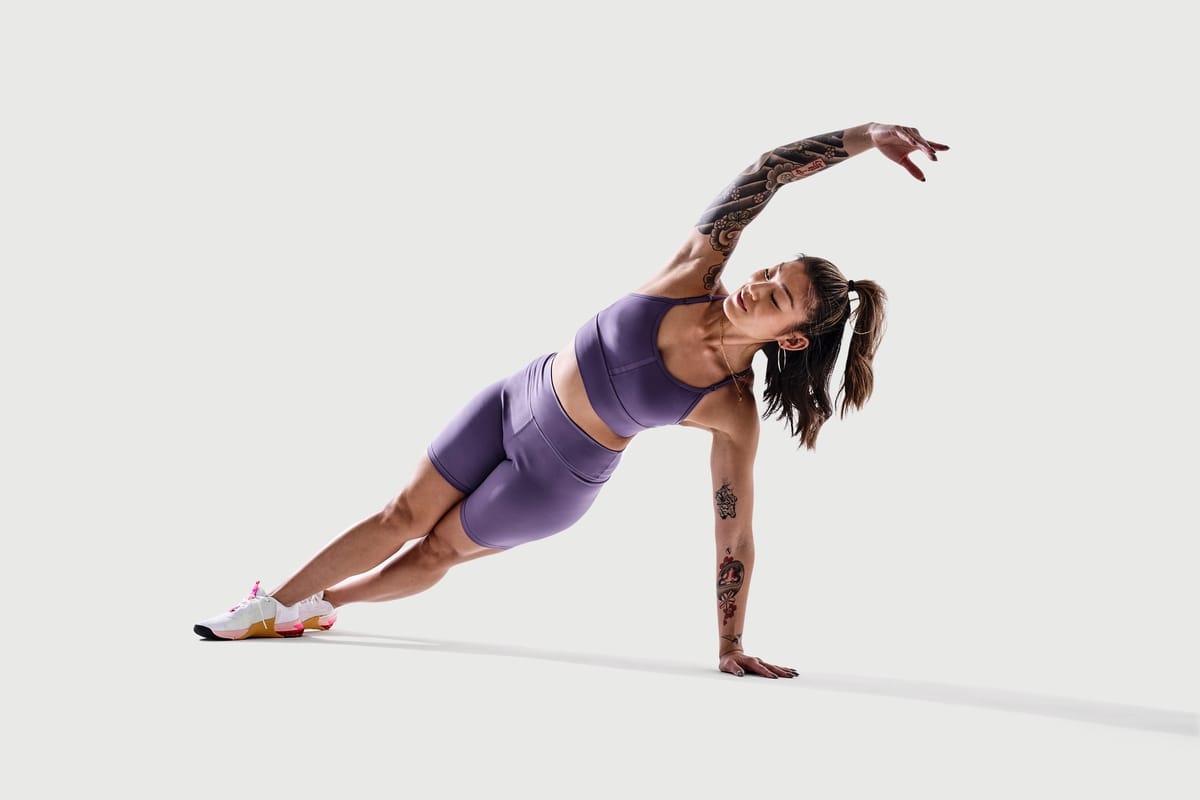5 min read
How to Improve Body Composition: 3 Things to Know
It’s about more than counting your calories

Fitness Strength Alex
Let’s just throw it out there. A big reason why people work out is to look different. Read: They want to improve body composition—meaning how much fat and muscle they have on their frame. In most cases, people are looking to reduce fat and build muscle.
Sure, there are a ton of health benefits that come with being active, but oftentimes, it’s the aesthetic benefits of more toned arms or a more shapely caboose that keep us motivated.
And a big part of looking “better” (we think you already look great, by the way) is often linked to wanting to lose weight and have more muscle tone. Losing weight is one of the most heavily cited reasons for starting a fitness regime, and really in principle, it doesn’t sound super hard: Just burn more calories than you consume.
It may be math, but it’s simple math. You ate 1,500 calories today? You’ll just need to burn more than that to start losing weight.
Is improving your body composition really that simple, though? Here are three key things you need to keep in mind.
We here at Tempo think you’re way more than a number on a scale. And you should, too, because focusing too much on your weight can actually result in some detrimental oversights in your fitness.
Calorie-restricting diets paired with intensive exercise regimens—besides causing burn-out—can result in the loss of lean body mass (AKA that muscle that you’ve been trying so hard to build), which in turn can have cascading negative effects on your total body health.
Sure, you will likely drop weight while cutting calories and working out a ton, and you may see that number on the scale drop. What your scale isn’t telling you is that some of that weight you’re losing could be in the form of that hard-earned muscle and the shrinking of each of your muscle groups.
We instead like to think of your fitness journey in terms of body composition change. What’s that mean? Well, it’s about changing the proportions of your body’s fat and muscle. As you’ll probably guess, building muscle is the key to achieving what most of us really mean when we say “losing weight”: to have more muscle tone and look lean. Generally, one of the best ways to measure your body composition is by doing a professional full-body scan to do an in-depth assessment.
In order to build muscle and ultimately improve body composition, you’ll need to incorporate weight training into your fitness routine.
You’ll essentially need to lift progressively heavier weights to build underlying muscles so that they’ll grow and “pop”—meaning they’ll become a lot more apparent in your body change and lead to that toned and lean physique.
If you haven’t already, we recommend taking a gander at our previous post about progressive overload. It will walk you more specifically though how to scale your weight lifting regimen and how your Tempo will assist you in weight recommendations as you undoubtedly get stronger.
Some of you may be asking, “Okay, so if I’m putting on muscle mass, won’t I look bulky?”
Well, that’s the great thing about increasing lean muscle mass. Having more muscle on your body means you’ll have a higher resting metabolic rate, which means you’ll burn more calories just by existing! You’re still the same you, but with more muscle, and burning more calories every day (and maybe a new pair of pants because you’ve lost fat? Who knows!).
And it’s just not having muscle but the process of building muscle that offers a ton of benefits, too.
Lifting heavier weights has been shown to increase what’s known as EPOC—or excess post-exercise oxygen consumption—over lifting lighter weights. In English, that means lifting with greater intensity means you’ll be burning more calories after your workout is done. Some of you may have heard of this and call it the “afterburn.” So, while you’re lifting those heavy weights, just think that afterward, all of your hard work will continue to pay off in the form of more calories burned.
Some lifts you’ll want to consider if you want even more epic EPOC are compound movements that activate larger muscle groups, like deadlifts and squats. Of course, heavier lifting comes with increased chance of injury, so for all of you Tempo members out there, make sure to listen to your coaches during class and look out for our form-correction cues.
Alongside all of these body composition-changing benefits of building muscle are ones that are far beyond muscle tone and aesthetics, including increased bone density, improved posture, and decreased risk of type 2 diabetes.
We’ve talked a lot about how weight lifting and building muscle are important to seeing those key changes in your body that you want to see, but it’s a key part of mental wellbeing too.
Weight training is correlated to higher self-efficacy, or self-confidence. An improved sense of self likely means you’re sticking to your weight training routine and you’ll be reaping the benefits. This positive feedback loop of weight training, feeling better about yourself, and continuing your training is a vicious cycle of unrelenting awesomeness.
Weight training and body composition improvement can be an intimidating goal, especially if you’re new to fitness. Tempo’s expert team of coaches have developed weeks-long programs aimed at muscle growth. If you’re a current Tempo community member, we recommend checking out our BUILD classes.
Remember that if you want to improve your body composition, then consistency is key! Stick to the routine and you’ll get you where you want to be. Never get too down on yourself. Like we said, we like you just the weigh you are.








